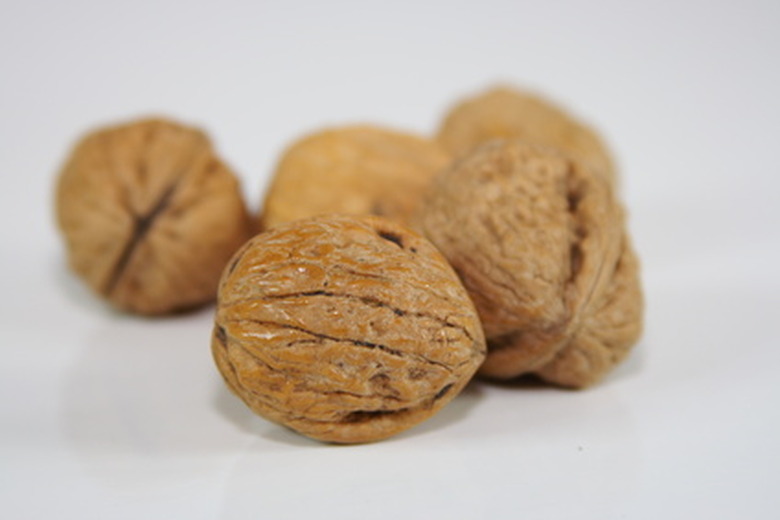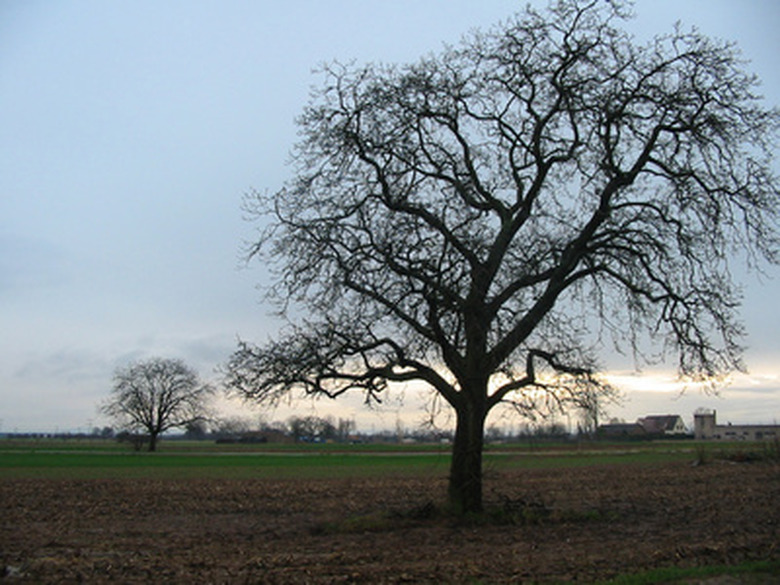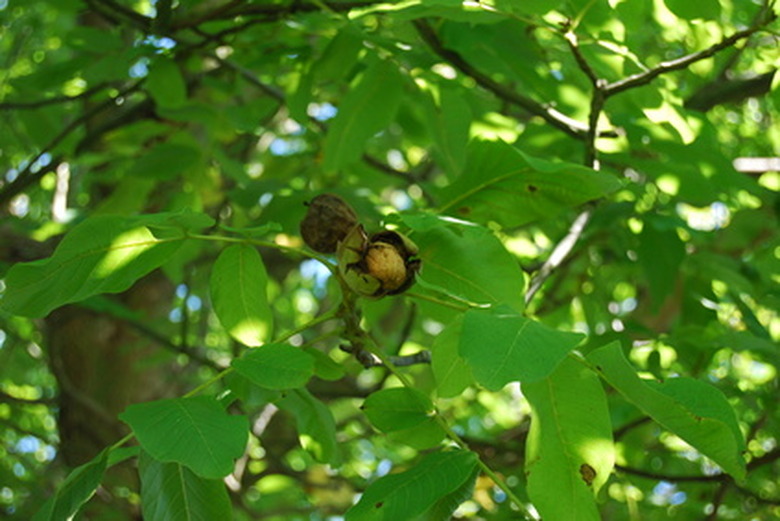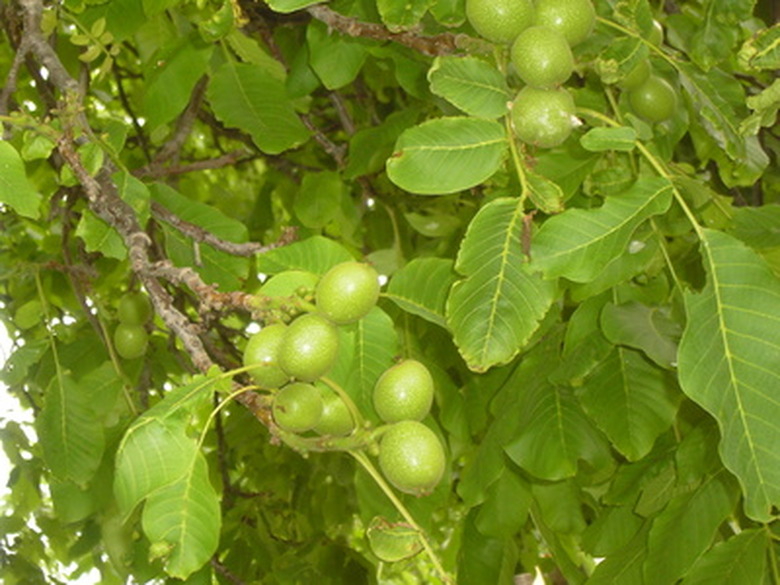Identifying Walnut Trees
Walnut trees are nut-producing trees that are native to North America. Several walnut tree species exist, each with their own specific attributes and characteristics. Walnut tree species include the black walnut (Juglans nigra), the English walnut (J. regia), the butternut or white walnut (J. cinerea) and the little walnut, dwarf walnut or Texas walnut (J. microcarpa). Tree field guidebooks are available at your local agricultural extension office.
Step 1
Identify the walnut tree by its mature size and form. Both the English and butternut walnut trees are 40 to 60 feet tall and wide with open, spreading rounded canopies. The black walnut tree is larger, 50 to 75 feet tall and wide, with a low-branching, rounded, open canopy.
- Walnut trees are nut-producing trees that are native to North America.
- The black walnut tree is larger, 50 to 75 feet tall and wide, with a low-branching, rounded, open canopy.
Step 2
Study the leaves to identify walnut trees. The butternut tree has alternate, pinnately compound leaves that are dull, dark green with 11 to 19 stemless leaflets and fine hairs. The black walnut has alternate, pinnately compound leaves that are 1 to 2 feet long, comprising 15 to 23 dark green, finely toothed leaflets that are each 2 to 5 inches long. The English walnut tree has alternate, pinnately compound, medium to dark green leaves with only five to nine leaflets that are 2 to 5 inches long.
Step 3
Look at the nuts or "fruits" to decipher the walnut tree species. The butternut has oblong, tapered fruits that are 1½ to 2½ inches long and covered with sticky hairs, encasing brown nuts with corrugated, thick, 1- to 1½-inch shells. The black walnut has three-layered fruits with a round outer layer that's 1½ to 2 inches wide, green fleshy husk, beneath which is a black, hard, thick corrugated shell that's 1 to 1½ inches across. The English walnut has fruits that grow in clusters of three to nine, with round, fleshy, green outer husks covering thin-shelled nuts that are 1½ to 2 inches across.
- Study the leaves to identify walnut trees.
- The English walnut has fruits that grow in clusters of three to nine, with round, fleshy, green outer husks covering thin-shelled nuts that are 1½ to 2 inches across.
Step 4
Identify the walnut trees by their habitats. The butternut grows in a wide range of soils, in cooler climates located in USDA hardiness zones 3 through 7, where winter temperatures dip down to minus-35 degrees Fahrenheit. The black walnut grows best in rich, deep, well-drained soils in zones 4 through 9, where winter temperatures stay above minus-25 degrees, while the English walnut likes deep, dry, lighter loamy soils and grows in zones 5 through 9, where minimum temperatures are no colder than minus-15 degrees.
Tip
You can identify the little or dwarf walnut tree (J. microcarpa) by its smaller size, growing up to only 20 to 30 feet in height. The little walnut tree has alternate and pinnately compound leaves with 11 to 25 leaflets that are smaller and narrower than other walnut species, making its canopy appear lighter and more open. The leaflets are dark yellow or light green with pale undersides. This walnut tree is native to the southern Midwest of the United States.
Warning
Don't confuse the butternut or white walnut tree with the black and English walnut trees. The butternut tree's bark is distinctly ridged and furrowed, while the black walnut has grayish-brown bark that's slightly scaly. Although the butternut and English walnut trees may appear similar, the butternut has a shorter, usually forked trunk.



